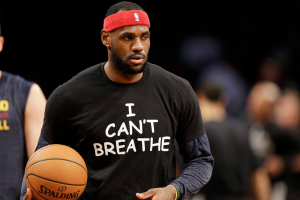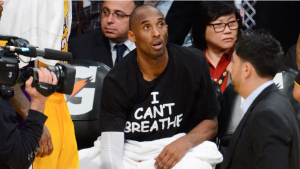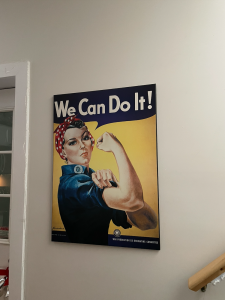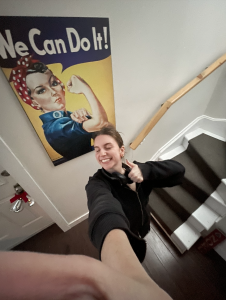1
Section One: The Fundamentals
A) What do we know about sport? What are common assumptions we make about sport and society?

As evidenced by the ongoing discussions about transgender athletes, sport does not transcend politics. Sports regulations for transgender athletes are highly politicized and represent larger social conflicts over inclusion, justice, and identity. Both proponents of trans rights and those who want competitive fairness put pressure on governing organizations like the NCAA and the Olympic Committee. Laws that prohibit trans athletes from competing in schools serve as a reminder of how sports can be a battlefield for political and cultural views. Sport does not exist outside of politics; rather, it reflects and perpetuates societal divisions, proving that discussions about rights, identity, and fairness are inextricably linked to the sports we play and watch.
Exercise 3: Notebook prompt
What are some other metanarratives about sport that you are familiar with? Find an image or video clip or draw something yourself that captures this idea…
So what? Why does any of this matter? Does it matter? As something we grow up with – live with – play through – we don’t often interrogate the meanings of sport, and perhaps we don’t want to.
But being aware of these assumptions and metanarratives is especially important, I would argue, because of the centrality of sport to our everyday lives, the role that sport plays in shaping our childhood and worldviews and….. [finish that thought]
| Our society is strongly influenced by sport, which shapes social norms, identities, and values. Our understanding of competition, achievement, and even morality is influenced by a number of metanarratives around sport. The “American Dream” narrative, which portrays sports as a meritocratic arena where success is attained with perseverance and hard effort, is one common metanarrative. Athletes like Serena Williams and Michael Jordan are revered as examples of people who achieved success by overcoming adversity with pure willpower. This story serves as further evidence that anyone can achieve success with enough effort, regardless of background.
The notion that sport is a unifying factor that cuts over nationality, class, and race is another prevalent metanarrative. Large-scale athletic events, such as the Olympics or the FIFA World Cup, are presented as occasions for world unity where people put aside their differences in the interest of fair play. But this ignores how nationalism, marketing, and structural injustices may also be used by sports to further polarize society. These metanarratives influence our perceptions of society and sport. We risk ignoring the structural obstacles that restrict access to sports, such as racial discrimination or economic advantages, if we blindly embrace the meritocracy story. We run the risk of overlooking sport’s function in sustaining nationalism or bolstering power structures if we accept it as a simply unifying force. Being aware of these assumptions and metanarratives is especially important because of the centrality of sport to our everyday lives, the role that sport plays in shaping our childhood and worldviews, and how it affects how we perceive achievement, identity, and fairness. Sport could continue to be a place of exclusion rather than empowerment if we do not challenge these narratives and run the risk of reiterating injustices. We may advocate for more inclusive and equitable athletic settings by critically analyzing these narratives. By acknowledging the ways in which socioeconomic class, gender, and race affect athletic achievement and access, we can fight against discriminatory practices and promote systemic change. Additionally, we can cultivate more positive relationships with competition, identity, and community by comprehending how sport perpetuates prevailing cultural notions like hypermasculinity, nationalism, or materialism. Sport reflects larger societal ideals and is more than just a game. We may use it as a platform for advancement rather than merely tradition by challenging its narratives.
|
B) What is social justice?
Exercise 4: Padlet Prompt
Think back to the last section and try to look at some of the ideas we discussed differently. How might sport and social justice actually co-exist?
Record any images, video clips, or gifs you added to the padlet and identify a point of intersection between sport and social justice (can be an issue or a barrier or a debate or something you would like to explore in more depth in this course) . Screenshot or paste in your response below.
| By using athletics as a platform for activism, inclusivity, and systemic change, social justice and sports may coexist. By putting in place rules that guarantee equitable access and representation, leagues and organizations may encourage diversity. When social justice is embraced by sports, they become a catalyst for change and spark discussions off the field. Sports and activism don’t have to be mutually exclusive; they may cooperate to confront injustices, promote solidarity, and build a more equitable and welcoming society for both athletes and supporters.
Protests by athletes have a profound impact, upsetting social norms, igniting national dialogues, and influencing policy changes. Olympic competitors raising their fists in 1968 represented resistance to oppression, while individuals such as Colin Kaepernick raised awareness of racial injustice by kneeling during the playing of the national anthem. Beyond sports, these demonstrations inspire activism by pushing legislators, groups, and supporters to confront structural problems. Critics accuse protesting players of politicizing sports, yet they too encounter criticism. Nevertheless, their deeds show how effective sport can be as a vehicle for change, demonstrating that athletes are not only powerful entertainers but also significant voices in the struggle for justice. In 2014, before a game in New York, Kobe Bryant and LeBron James were seen wearing a shirt that says “I Can’t Breathe” in protest against the death of Eric Garner, a Black man who was killed by a New York police officer after being put in a chokehold. These shirts were worn as activism and advocacy for the Black Lives Matter movement.
|
C) Social Justice Reading
(note: this activity is optional!)

D) KINESIOLOGY AND SOCIAL JUSTICE
Exercise 5:



Exercise 6:
What are the implications of bodies-at-risk discourse and the refusal to understand the health gap from a social justice perspective, according to the authors of this article?
| By portraying marginalized groups as innately lacking in discipline, fitness, and health, this discourse perpetuates prejudices rather than addressing structural injustices. By placing the blame for poor health outcomes on marginalized groups, it moves the emphasis from systemic obstacles like racism, poverty, and lack of access to high-quality treatment to personal accountability. Policymakers and educators are unable to develop inclusive health and physical education programs that address disparities when they disregard a social justice perspective. Instead, by sustaining inaccessible and culturally insensitive health initiatives, they perpetuate already-existing gaps. The authors contend that in order to create equitable policies and guarantee that everyone, regardless of race, class, or ability, has the chance to attain well-being, it is imperative to acknowledge health disparities via a social justice perspective.
|
Section Two: Sport Feminism
Exercise 7: Notebook Prompt
What is feminism? What does it mean to you? Choose one of the images below and explain how it captures your understanding of feminism (or find one that does speak to you and paste this into your pressbook with an explanation of why it matters to you.
| The conviction in and support for gender equality in the political, social, and economic domains is known as feminism. It works to eradicate patriarchal systems, combats systematic discrimination, and defends the rights of all people, regardless of gender. In addition to promoting women’s rights, feminism aims to establish a just society in which a person’s gender does not dictate their value, opportunities, or freedoms. Many waves of feminism have emerged over time, each concentrating on themes like reproductive rights, employment equality, voting rights, and intersectionality—which recognizes the intersecting oppressions experienced by women of all racial, socioeconomic, and sexual orientation backgrounds.
For me, feminism entails justice, choice, empowerment and intersectionality. It is the freedom to follow one’s goals without interference from society, the autonomy to make choices regarding one’s own body, and the defiance of cultural standards that have historically restricted people based on their gender. In order to guarantee that everyone, regardless of gender identity, has access to the same rights, privileges, and respect, feminism is about solidarity and group advancement. It involves actively striving for a society free from gender-based discrimination, not merely attaining equality on paper. An iconic picture that perfectly embodies my conception of feminism is the Rosie the Riveter “We Can Do It” poster. This poster was one of my first introductions to feminism at quite a young age. My father owned an architectural firm, and during the course of his business, hung up on the wall of his office was a giant Rosie poster. I remember being enthralled by it as a young girl, before knowing its true meaning. Once he shut down his business, the poster was placed directly in my hands, is now hung up in my university home and I intend on hanging it on the walls of the many living spaces that will pass me in the future. The poster, which was first made during World War II to urge women to work while men were away at war, stands for tenacity, fortitude, and the defiance of gender norms. With her rolled-up sleeves and resolute demeanour, Rosie represents a woman’s capacity to carry out jobs that were previously thought to be solely male. Her image supports the feminist view that women are equally valuable and competent in all spheres of society, challenging the idea that they are weak or unable. However, the image of Rosie the Riveter also draws attention to the complexity of feminism. Many women of colour were denied the advantages of working during the war and the subsequent feminist movements, despite the fact that it came to represent women’s liberation. This illustrates how crucial intersectionality is to feminism—making sure that all women, not just those with privilege, are included in campaigning. Rosie the Riveter is a living example of the feminist values of equality and strength, serving as a reminder that tearing down barriers calls for initiative, fortitude, and a united front in the struggle for justice. Feminism is about changing society for everyone, not simply about empowering individuals.
|
Exercise 8: Notes Prompt (optional)
Liberal, Socialist, and Radical feminism all offer a distinct viewpoint on gender disparity in sports as well as special ways to overcome structural obstacles.
The goal of liberal feminism is to achieve gender equality by means of improved opportunities, legislative reforms, and policy improvements. This entails promoting fair compensation, improved financing, and access to leadership and training opportunities in the sports industry.
Socialist feminism links class oppression and capitalism to gender inequality in sports. It contends that because profit-driven organizations give preference to men’s sports, which exacerbates economic inequality, women’s sports are under appreciated. Redistributing resources, boosting public funding for women’s sports, and destroying the financial systems that support male athletes are all goals advocated by socialist feminists. They draw attention to the fact that systematic economic disadvantages make it more difficult for working-class women, especially women of colour, to participate in sports.
The fundamental basis of sports as a patriarchal, male-dominated organization is called into question by radical feminism. It criticizes how sports perpetuate hypermasculinity, traditional gender roles, and the objectification of female athletes. Radical feminists contend that male-dominated organizations that value men’s physical supremacy also contribute to the underfunding of women’s sports. In addition to opposing the binary gender system and tearing down sexist customs like the media’s sexualization of female athletes, they support reorganizing sports to be more inclusive.
NB: Cornell notes is a great resource that teaches effective notetaking. Unfortunately, our system can’t save notes taken in the H5P app, so this is fully optional.
Exercise 9: Crossword Activity
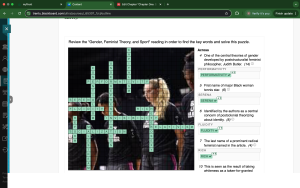

Exercise 10: Padlet Prompt
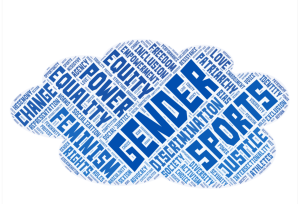
|
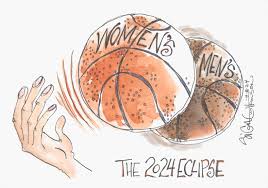
| The degree of interest and support for women’s sports, in my opinion, varies depending on media coverage, funding, and cultural views on gender and athleticism. Women’s sports draw millions of viewers and ardent supporters when they receive equal exposure, like in the case of the WNBA Finals or the FIFA Women’s World Cup. However, it appears that women’s sports are less popular due to differences in representation, marketing, and funding. Lack of institutional support, not a lack of interest, is the problem. Engagement increases with visibility, demonstrating that people are interested in women’s sports when they are given the same respect as men’s.
|

